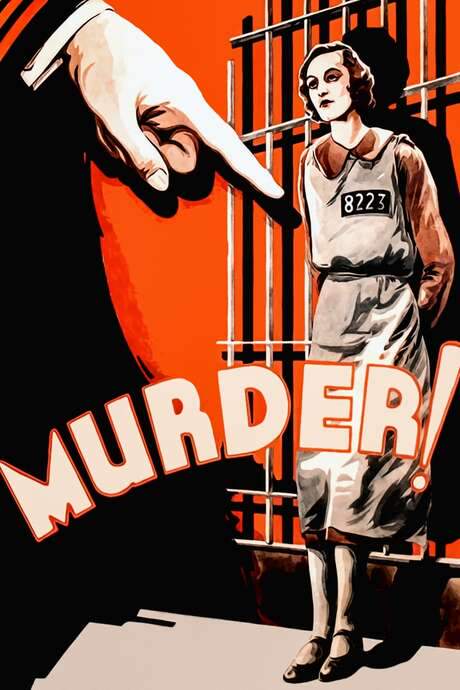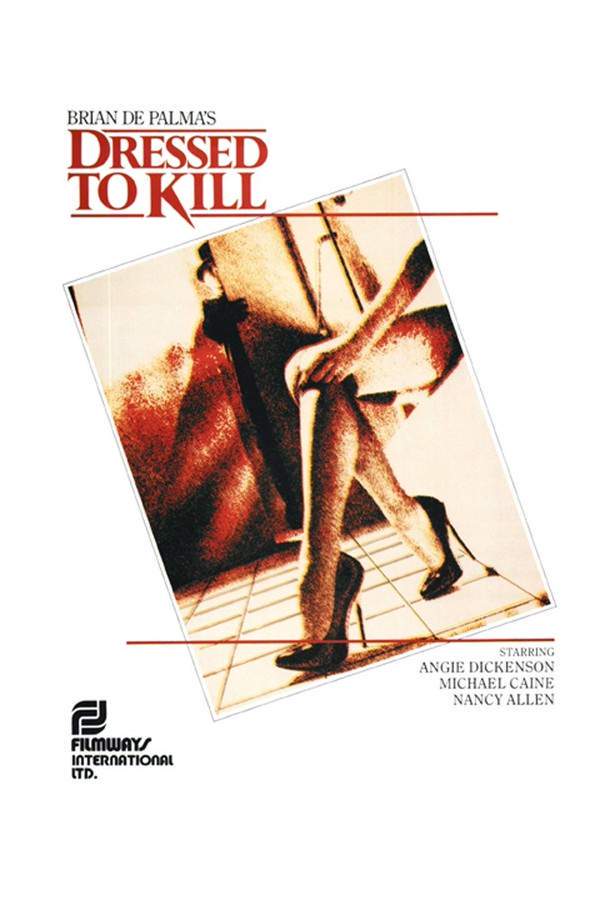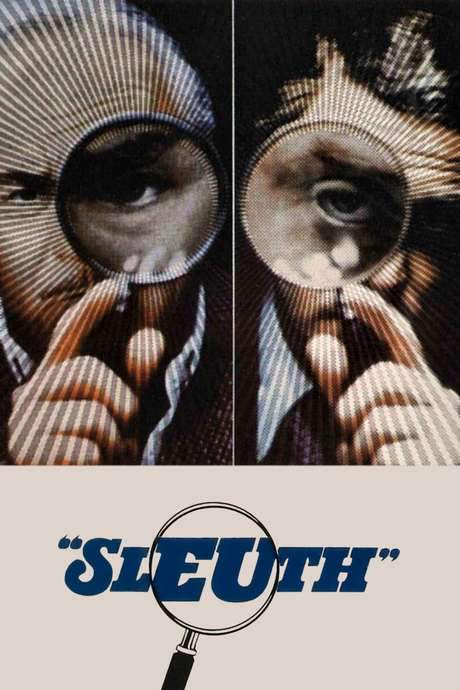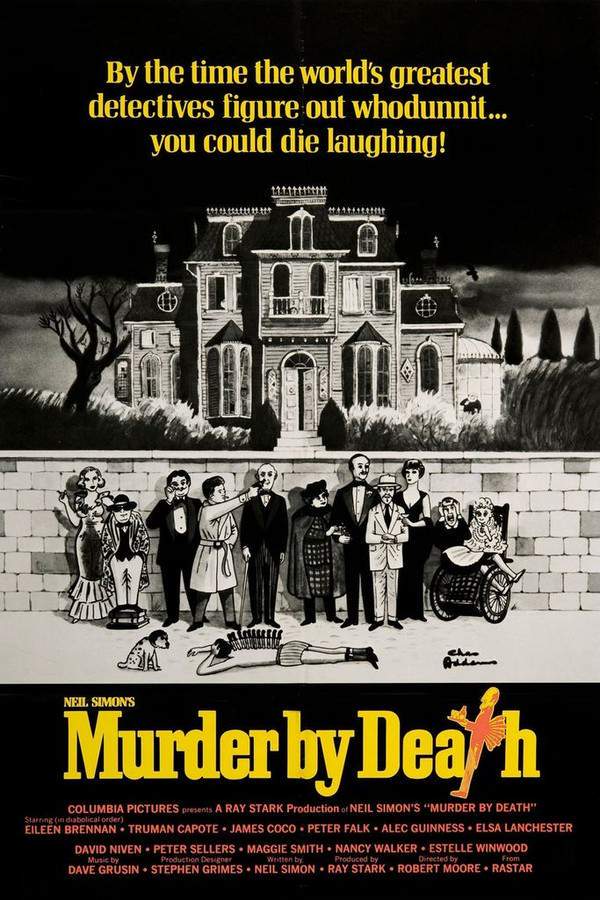
Dial M for Murder
Year: 1954
Runtime: 105 min
Language: English
Director: Alfred Hitchcock
A stifling marriage and social pressures lead writer Mark Halliday to reconnect with Margot Wendice, an old acquaintance. Soon, Mark finds himself caught in a dangerous scheme involving blackmail and a plot to frame Margot for murder. As the situation escalates, Mark must use his intelligence to expose the truth and protect Margot from suspicion and potential harm, all while navigating a web of deceit and a desperate attempt to maintain control.
Warning: spoilers below!
Haven’t seen Dial M for Murder yet? This summary contains major spoilers. Bookmark the page, watch the movie, and come back for the full breakdown. If you're ready, scroll on and relive the story!
Dial M for Murder (1954) – Full Plot Summary & Ending Explained
Read the complete plot breakdown of Dial M for Murder (1954), including all key story events, major twists, and the ending explained in detail. Discover what really happened—and what it all means.
Tony Wendice, played by Ray Milland, is a former professional tennis player who has married his wife Margot, portrayed by Grace Kelly, mainly for her wealth. In a bid to make Margot happy, Tony has abandoned his athletic career and now works in the sports equipment business. However, an interesting twist arises when Margot’s past comes back to haunt them; she had once shared a romantic relationship with Mark Halliday, an American crime writer played by Robert Cummings. Despite their previous connection, Margot cut ties with Mark when he returned to the United States, leading to a long period of silence between them.
As fate would have it, when Mark finds himself back in London, Margot divulges to him that she burned nearly all of his letters, save for one that was unwittingly seized by a blackmailer who demanded a sum of £50. In a bid to reclaim the stolen letter, Margot sends the money to a pawn shop location, but her efforts are in vain as neither the letter nor the blackmailer’s demands are met. Mark expresses his desire to inform Tony about their past to pave the way for Margot to divorce him, thereby reuniting with her, but Margot is paralyzed by the thought of hurting Tony’s feelings. Unbeknownst to her, Tony is aware of their previous affection and harbors dark intentions.
The couple’s financial entanglement deepens with both having updated their wills, designating each other as beneficiaries with a combined worth of £90,000. Over the course of a year, in a sinister preparation, Tony meticulously concocts a plan to eliminate Margot without her suspecting a thing. His plotting leads him to steal a handbag that holds a letter from Mark, orchestrating a ruse where he poses as the very blackmailer who harassed Margot, testing her willingness to pay. To ensure the plan’s success, Tony meticulously tracks down an old acquaintance, Anthony Dawson, who now goes by the alias ‘Captain Lesgate.’ Through blackmail, Tony coerces Lesgate into agreeing to commit the murder.
Utilizing the occasion of Mark’s return as an alibi, Tony orchestrates a narrative that paints a picture of a burglar’s violent intrusion. He informs Lesgate to call their home at precisely 11:00 PM, prompting Margot to answer the phone in a vulnerable situation, allowing Lesgate to strike. Meanwhile, the widow remains unaware of the orchestrated drama and is persuaded to engage in a mundane task rather than pursue her own plans.
As the setting unfolds, Margot, perhaps unknowingly participating in Tony’s scheme, goes to check the phone, leaving herself exposed. However, the plan spirals into chaos when Margot, armed with incredible determination, manages to stab Lesgate in self-defense with a pair of scissors. As he falls lifelessly to the floor, Tony races to cover up his treacherous scheme, quickly reworking their narrative to frame Margot as the murderer.
In a dramatic turn, Inspector John Williams interrogates them, only to find initially plausible evidence of Margot’s guilt. The tale progresses as the courtroom drama unfolds, leading to Margot’s conviction and impending execution. Meanwhile, Tony revels in the success of his deceit, yet he is blissfully ignorant of the investigative measures that the police are undertaking, which will soon unravel his treachery.
Months later, right before Margot’s scheduled hanging, Mark proposes a desperate plan to Tony—he could confess to the crime and take the fall, ultimately saving Margot’s life. Coinciding events lead to the unraveling of Tony’s lies, culminating in the Inspector’s cunning interception that eventually proves Tony’s guilt beyond a shadow of a doubt.
Ultimately, the narrative comes full circle as Tony, flimsy layers of deception crumbling under scrutiny, realizes his meticulous web of lies is collapsing. In an ironic twist, as he stands confronted by the very people he believed he had outsmarted, he finds himself ensnared within his own malevolence, met with the gravitas of justice as Inspector Hubbard finally captures the real criminal mastermind. In the closing moments, the atmosphere grows thick with tension as tears stream down Margot’s face, a symbol of both tragedy and the inevitable power of truth.
Last Updated: January 19, 2025 at 18:49
Unlock the Full Story of Dial M for Murder
Don't stop at just watching — explore Dial M for Murder in full detail. From the complete plot summary and scene-by-scene timeline to character breakdowns, thematic analysis, and a deep dive into the ending — every page helps you truly understand what Dial M for Murder is all about. Plus, discover what's next after the movie.
Dial M for Murder Timeline
Track the full timeline of Dial M for Murder with every major event arranged chronologically. Perfect for decoding non-linear storytelling, flashbacks, or parallel narratives with a clear scene-by-scene breakdown.

Characters, Settings & Themes in Dial M for Murder
Discover the characters, locations, and core themes that shape Dial M for Murder. Get insights into symbolic elements, setting significance, and deeper narrative meaning — ideal for thematic analysis and movie breakdowns.

Similar Movies to Dial M for Murder
Discover movies like Dial M for Murder that share similar genres, themes, and storytelling elements. Whether you’re drawn to the atmosphere, character arcs, or plot structure, these curated recommendations will help you explore more films you’ll love.
Explore More About Movie Dial M for Murder
Dial M for Murder (1954) Scene-by-Scene Movie Timeline
Dial M for Murder (1954) Movie Characters, Themes & Settings
Dial M for Murder (1954) Spoiler-Free Summary & Key Flow
Movies Like Dial M for Murder – Similar Titles You’ll Enjoy
Dial M for Murder (1981) Complete Plot Breakdown
Dial Love for Murder (1970) Ending Explained & Film Insights
A Perfect Murder (1998) Plot Summary & Ending Explained
Murder! (1930) Full Movie Breakdown
Dial 999 (1955) Full Summary & Key Details
A Kind of Murder (2016) Plot Summary & Ending Explained
Murder Mystery (2019) Movie Recap & Themes
The King Murder (1932) Spoiler-Packed Plot Recap
The Studio Murder Mystery (1929) Full Movie Breakdown
Dressed to Kill (1980) Plot Summary & Ending Explained
Sleuth (1972) Plot Summary & Ending Explained
A Slight Case of Murder (1999) Story Summary & Characters
Murder Without Crime (1950) Story Summary & Characters
Dear Murderer (1947) Full Summary & Key Details
Murder by Death (1976) Ending Explained & Film Insights

















